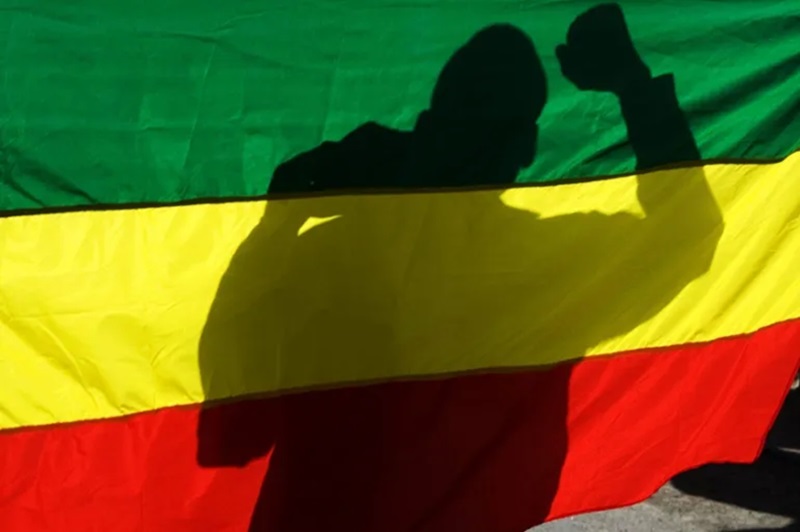 In the aftermath of the conflict in the northern region, Manbere Selama has emerged as a distinct entity, separating from the Synod of the Ethiopian Orthodox Tewahedo Church to form the Tigray Orthodox Tewahedo Church. This new church is actively working to establish its influence within the Raya areas.
In the aftermath of the conflict in the northern region, Manbere Selama has emerged as a distinct entity, separating from the Synod of the Ethiopian Orthodox Tewahedo Church to form the Tigray Orthodox Tewahedo Church. This new church is actively working to establish its influence within the Raya areas.
Insights obtained by Wazema from local followers and religious leaders reveal that numerous churches located in districts marked by contested identities and under the sway of Tigray militants have chosen to affiliate with the Manbere Selama framework. This alignment reflects the ongoing complexities within the region.
Particularly in areas devoid of federal security forces, a considerable number of churches have joined this peace initiative. Reports indicate that priests who are opposed to this shift have moved to Alamata, where they are finding support from the local community.
The former congregation of the church has been dissolved, resulting in the establishment of a new congregation. In conjunction with this transition, the seals previously associated with the Ethiopian Orthodox Tewahdo Church have been replaced to signify this change.
There are reports suggesting that certain rural churches have been mandated to send their income to the South Tigray diocese, which functions under the authority of Menbere Selama. This development raises significant concerns about the financial responsibilities that are being placed on these rural congregations.
Moreover, it has been noted that the rural churches, which were formed under the leadership of Manbere Selama, have begun to implement their own financial management systems following their separation from the previous preacher’s assembly. However, Manbere Selama’s attempts to establish a foothold in the Raya regions, where identity issues are particularly sensitive, have faced opposition from local communities. Residents have reported that priests appointed by the ministry are conducting their services accompanied by armed escorts in areas where the ministry’s recognition of peace is not acknowledged.
In urban areas, Menbere Selama has yet to establish a formal organizational framework. Recently, a conflict arose between the followers of Menbere Selama and the local congregation at St. George’s Church, located on the outskirts of Alamata. This incident highlights the ongoing tensions surrounding the management of religious institutions in the region.
When Menbere Selama assumed control of the church, he attempted to implement his own governance structure, which was met with resistance from the local community. The parishioners expressed their grievances to the command post responsible for overseeing the area, indicating a significant divide between the new leadership and the established local practices.
It has come to light that representatives from other faith communities who oppose Menbere Selama’s initiatives have also lodged complaints with the command post. Nevertheless, residents and religious educators have reported that their appeals were dismissed, as the command post claimed it does not intervene in religious affairs. This situation has raised concerns among the community about the erosion of their religious freedoms, particularly in light of the forced separation from the Ethiopian Orthodox Tewahedo Church.
Menbere Selama faced significant challenges in its attempts to expand its presence within urban churches, primarily due to the strong resistance from its adherents. Nevertheless, the organization remained steadfast in its commitment to pursue its objectives despite these obstacles.
Evesema identified that the root cause of the community’s dissent stemmed from the unresolved condemnation issued by the Synod at 5 Kilo, coupled with the existing theological disparities within the Ethiopian Orthodox Tewahedo Church. This situation highlighted the complexities surrounding the community’s grievances and the need for resolution.
Prior to the conflict in the northern region, the churches located in the six districts of Raya, which are currently facing questions regarding their identity, were under the administration of the Southern Tigray diocese. Following the conclusion of the war and the subsequent formation of the Menber Salama Church, which distanced itself from the Ethiopian Orthodox Tewahedo Church, these churches formally requested to separate from the old diocese. This led to the establishment of a new ecclesiastical structure known as the Raya diocese.
Evesema recognized that Menber Selama, which is currently enhancing its framework within religious institutions in rural areas, is advocating for the churches to revert to the previous governance structure, specifically that of South Tigray.
Wazema inquired with officials from the Ethiopian Orthodox Tewahedo Church regarding this situation, but they indicated that they were unable to provide a response while the report was still under preparation.
In light of the administrative gap resulting from the conflict in northern Ethiopia, the bishops of the Tigray region took the initiative to establish Menbere Selama and the Office of the Tigray Orthodox Tewahedo Church Bishops’ Conference nearly a year ago. This move was aimed at addressing the leadership vacuum in the area and providing guidance to the faithful during a tumultuous period.
However, the Synod of the Ethiopian Orthodox Tewahedo Church subsequently declared its non-recognition of the Tigray Church, Menbere Selama, and the newly appointed bishops. Furthermore, it issued a condemnation of the bishops who were leading this new initiative, thereby intensifying the existing tensions within the ecclesiastical community.


















